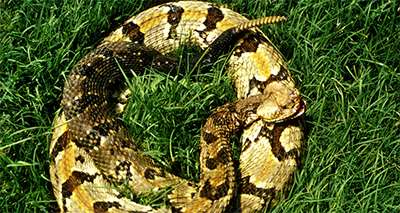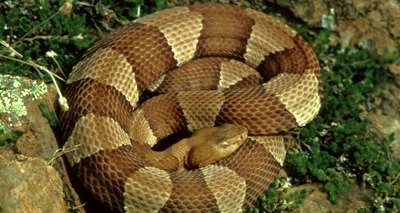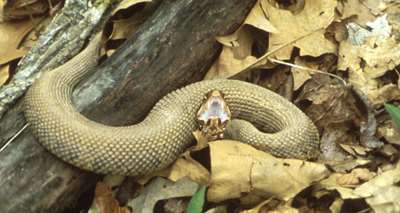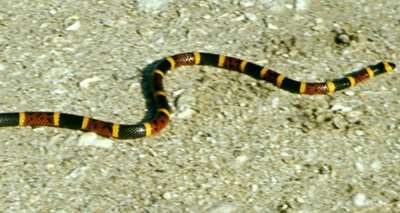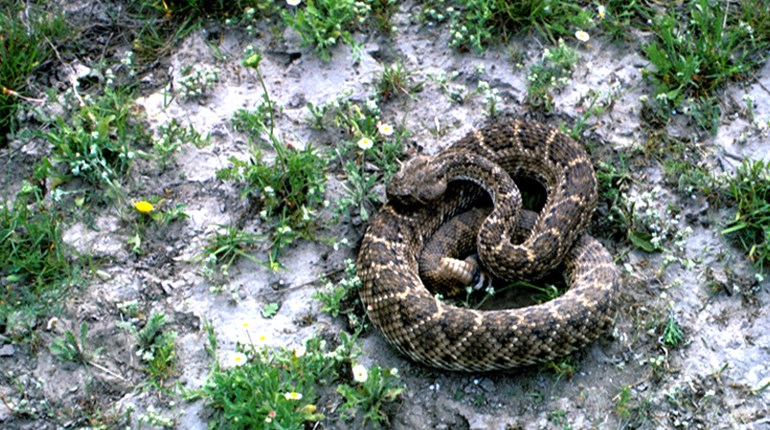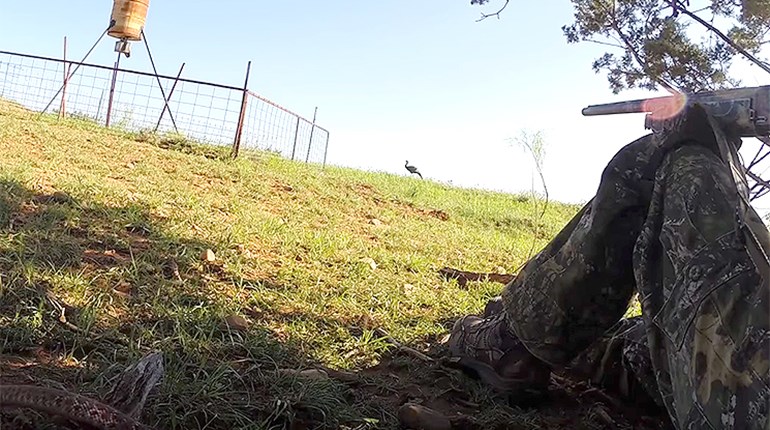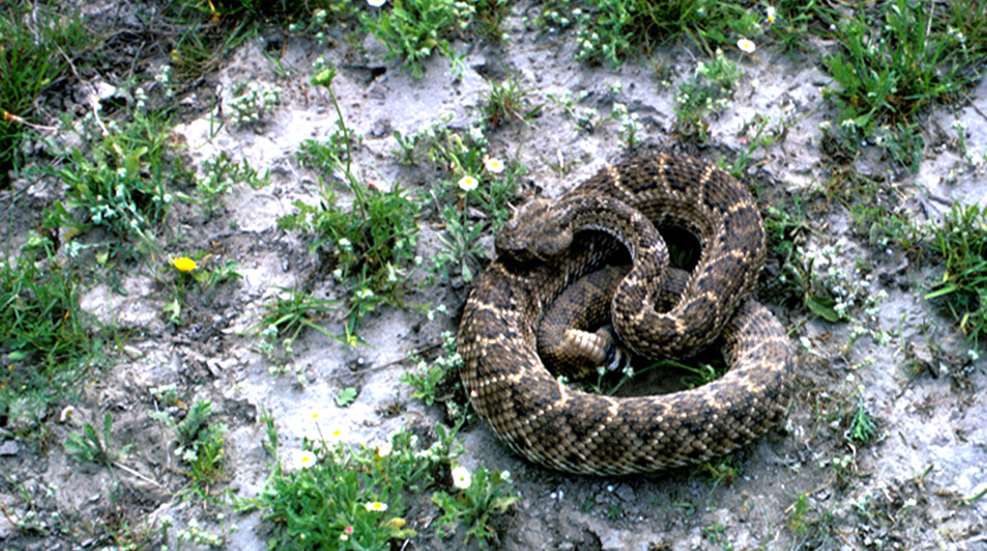
Picture this: You're hiking down a wilderness trail you know well, putting one foot in front of the other while your mind roams free. Suddenly, that "twig" a few feet away moves-then slithers away so fast you almost think you imagined it. In "Snake," the poet Emily Dickinson described the feeling of a sudden serpentine sighting as "a tighter feeling/And zero at the bone." Even the toughest hikers and hunters know that rush of fear well. But was the snake you saw dangerous? What should you do to avoid a bite? And what should you do if you or someone you know is bitten?
There are three main types of venomous snakes in North America: the "crotalids," (rattlesnakes), the "agkistrodons," (copperheads and cottonmouths) and the coral snakes (Eastern and Western).
Rattlesnakes are the easiest to identify-that "rattle" at the base of the tail is a dead giveaway. Do know that baby rattlesnakes might just have a small, hard-to-see rattle...but they can still bite.
Copperheads and cottonmouths are closely related, but they don't look much alike. Copperheads are thick-bodied snakes with copper-colored heads (that's where the name comes from). Their tan to pinkish-colored bodies sport brown bands.
Cottonmouths are mostly aquatic snakes, preferring to live in areas of brackish water. They tend to have dark olive, brown or black upper bodies with darker bands that may be hard to see, except for on their sides. When threatened, they open their mouths to display the white lining inside-hence their names.
Coral snakes, with their vibrant red, yellow and black coloring, are quite beautiful-and very venomous. The good news is that they're also shy and slow to strike, and their short fangs won't penetrate most leather. The king snake, a non-venomous species, has very similar coloring. The rhyme to help you tell them apart is "Red touches yellow, kill a fellow; red touches black, venom lack."
You should understand that none of North America's venomous snakes has a particular desire to bite you. You are far too large for them to swallow, so they can't eat you-therefore, to bite you is to waste venom. They are most likely to strike if they feel threatened. Here's how to avoid dangerous misunderstandings:
1. If you see a snake, leave it alone. Don't try to kill it or pick it up. If you need to get by it, give it a 6-foot berth.
2. Stay alert when you're climbing rocks or hiking over broken, rocky terrain. Snakes are cold-blooded and like to warm themselves on rocks when it is cool outside.
3. Don't put your hands or feet anywhere you can't see. When it's hot, snakes will cool themselves down by hiding out in cool, shady spots.
4. If you can't avoid walking through tall grass or rocky terrain, wear thick leather boots and/or snake gaiters.
What should you do if a member of your party is bitten by a venomous snake? You might be surprised to learn that many first-aid specialists are now saying you should not do any cutting around the bite, nor should you attempt to use your mouth to extract the venom. (This can cause infections that might wind up complicating treatment for the bite.) Instead, the American Red Cross recommends you do the following:
1. Wash the bite with soap and water.
2. Immobilize the bitten area and keep it lower than the heart.
3. Get medical assistance as soon as possible.
If you're unable to get to medical care within 30 minutes, wrap a bandage 2 to 4 inches above the bite. Don't make it tight as a tourniquet: It should be loose enough to slip a finger underneath. If you have a commercial snakebite kit, you can use a suction device to help draw venom out of the wound. (Again, it's not recommended that you make any cuts around the bite to do this.)

